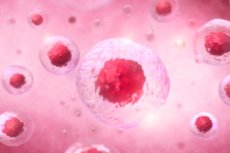New publications
Stem cells may enhance the effectiveness of fertility treatments
Last reviewed: 02.07.2025

All iLive content is medically reviewed or fact checked to ensure as much factual accuracy as possible.
We have strict sourcing guidelines and only link to reputable media sites, academic research institutions and, whenever possible, medically peer reviewed studies. Note that the numbers in parentheses ([1], [2], etc.) are clickable links to these studies.
If you feel that any of our content is inaccurate, out-of-date, or otherwise questionable, please select it and press Ctrl + Enter.

A new study led by researchers at the University of Copenhagen has found that an unusually versatile and regenerative stem cell in early embryos may hold the key to creating new, effective treatments for infertility. The mouse study, published in the journal Cell and titled "The primitive endoderm supports lineage plasticity to enable regulative development," opens up new perspectives in this area.
Pregnancy is a complex process that requires a sperm to find an egg and fertilize it in the fallopian tube. The egg then begins to divide and after five days becomes a blastocyst, which eventually develops into a fetus. However, as infertility becomes a more common problem, the number of people turning to reproductive technologies is growing. In Denmark, such cases account for one in eight pregnancies.
Despite this, the success rate of such procedures remains low, amounting to only around 20-30%, depending on the woman's age and fertility. Now, researchers at the University of Copenhagen have made a breakthrough that could lead to better fertility treatments in the future.
"We study cells in the mouse embryo called primitive endoderm or hypoblast. We found that these cells are unique and capable of creating their own embryo. This is particularly exciting because a recent study showed that primitive endoderm is the only cell type in the embryo associated with high implantation success in clinical trials," says student and first author of the study Madeleine Linneberg-Agerholm.
She adds: "These cells normally provide nutrition and support to a normal embryo, but when we isolate them, they can create an embryo themselves, which is a very surprising discovery."
The researchers also found that stem cells from the primitive endoderm grown in the lab develop in a petri dish to form "embryonic stem cell models" called blastoids with very high efficiency. These models could be an important tool for discovering new drugs to improve IVF outcomes.
"This could be particularly important for improving current fertility treatments, as plasticity and resilience may be key to ensuring embryos survive in the laboratory and during transfer to the mother," says Professor Joshua Brickman, senior author of the study.
Although the study was conducted on mice, the scientists are already planning to conduct similar studies on human stem cells.
Primitive endoderm as a "bookmark"
When the embryo begins to develop, it is a single cell, which then becomes a cluster of cells, with the outer cells becoming the future placenta and the inner cells forming the primitive endoderm, the future yolk sac, or epiblast, which forms the embryo itself.
"The final stage of blastocyst development is the primitive endoderm. And if you take away everything around the primitive endoderm, it somehow 'remembers' how to make an embryo and can do it itself," Brickman explains.
"We also showed that these cells in the primitive endoderm remember how to make other cell types because they have transcription factors that sit on the DNA at important regulatory sequences (enhancers), like bookmarks. These factors normally don't do anything, but they can remember what to do if there's a problem. Think of the genome as a book. These bookmarks remind you what page the instructions are on to make other cell types."
The missing link?
The researchers hope their findings will help understand how to improve the chances of successful IVF and provide more insight into why some people have difficulty conceiving.
"In cases where women have difficulty conceiving, a defect in the primitive endoderm may be the cause, as it not only provides nutrition but may also play an important role in repairing damage. This is still just a hypothesis, but it is remarkable that this cell type is such a strong predictor of successful implantation," says Brickman.
Currently, researchers are focused on better understanding the functions of primitive endoderm and improving existing human primitive endoderm stem cells.
"We believe this indicates that the early primitive endoderm is a structure capable of regenerating missing lineages when damaged. Since we have created primitive endoderm stem cells, studying them and the signals that direct them may lead to improved IVF treatments," Brickman adds.
